
Politics can be a meticulous business. There are voters to analyze, boxes to be checked, heads to be counted and put in a row. Well organized electoral campaigns require a certain amount of numeric dissection. And, as with any game, numbers matter, especially when discussing potentially divisive social constituencies, like the gays.
It’s with that in mind that the National Stonewall Democrats this week released glowing data on the state of gay convention goals, like the fact that there are 27% more homos this year than there were four years ago.
According to the NSD’s unofficial tally, there are 358 LGBT representatives headed to Denver this month, 48 states are sending pink participants and 36 states increased their gay inclusion. Gay Democratic leaders also emphasized during a conference call this week that those numbers may get an unsuspected boost during the actual convention, when previously identified gay participants will show their true colors.
These are all promising statistics, yes, but they may be equally misleading. NSD makes very clear that they’re numbers are unofficial, for only the DNC can release final convention statistics, which they hope to do by next week.
Official stamp aside, the NSD numbers don’t accurately reflect gay delegate goals for another reason. The 27% increase and estimated 358 participants include delegates, standing committee members and interns, none of which are counted by the DNC. NSD Communications Director John Marble tells us that while the numeric goals are the same, NSD did add about 25 extra participants who identify LGBT, a fact that has some gay Democrats crying “foul.” One insider jeered, “If it looks like padding and smells like padding, it must be padding.”
Washington Blade today put the numerical skewing into starker contrast:
While 47 states and D.C. established the goals for gay delegates, committee members and other participants, fewer than half of the states met the benchmarks through delegates alone.
Stonewall numbers released this week show 21 states and D.C. met their goals based solely on their delegate count. Seven other states met their goals by adding committee members and alternate delegates to their totals.
Padding or no, the NSD and other gay leaders are playing a very sophisticated game. And the stakes are high.
Rather than presenting the cynical, less uplifting facts – gays only represent 6% of the total delegate count – these activists are looking to shift the gay voters eye. Once gay Democrats have a wider perspective, that’s when they can, as NSD executive director Jon Hoadley says, “change the face of the Democratic party.”

[Benjamin Franklin penned the famous “Join, Or Die” cartoon in 1754, just as the colonies were coming together against Great Britain.]
Gay Democrats have been rightfully concerned about the convention’s queer inclusion, particularly after a dust-up between gay and black leaders within the party. The major discussion began back in 2006, when superdelegate Garry Shay proposed including gays in the party’s affirmative action policy. Some black leaders scoffed at the idea, which resulted in the aforementioned gay goals.
Though he refuses to speak on the original conflict, Marble insists those tensions have been resolved. And, in fact, evolved to their benefit: “You know, when we had the initial fight over the delegate rules – definitely this was not our preferred path at the beginning, but we realized that they had this compromise. This was something that we could actually work with… We realized that we could use that as an opportunity.” And that opportunity presented itself most clearly on the state level, where gay activists have been courting local parties and officials.
While states like North Dakota and Nebraska aren’t sending any known homos, Marble talks excitedly about other successes, such as Tennessee. Like some other states, Tennessee officials attempted to excuse themselves from gay goals by claiming they lacked the resources to track down the same-sex set. Using their ever-growing network of party peers, the NSD then worked with state party officials to link them up with gay activists, an effort Marble describes as well worth the trouble and initial hiccups.
I don’t want to say it was like pulling teeth, but it was definitely an educational experience in some communities and some states. That being said, we’re coming out of it at a place that has really repositioned some of these state parties – and that was our intent.
With inclusive voices in place, NSD hopes to garner legislative support for non-discrimination laws, hate crime expansion and other concerns close to queer communities. And, additionally, gay convention participants may later run for public office, as happened with Alabama state legislature Patricia Todd.
As press and pundits focus on numbers, DNC LGBT caucus leader Rick Stafford made clear this week that gay Democrats have a bigger task at hand:
If we are going to be successful in adopting a full equality agenda for the LGBT community, the most important focus in Denver is about electing Barack Obama as the next President of the United States… If we don’t elect Barack Obama, it stops anything that we might want to do in Congress in terms of marriage equality, in terms of hate crimes, employment discrimination, HIV/AIDS public policy… If we don’t elect Barack Obama, a lot of our agenda is going to be on hold for another four years.
To Stafford and others, gay delegates are more than a marker for the party’s rhetorical big tent, but a utility toward internal party progress.
The number slants aren’t merely a pat on the back for NSD and its allies – although, yes, there is a bit of self-congratulation – but a conscious effort to bolster voter confidence. Convinced that things are right on – or above – target, gay delegates and voters will be more inclined to discard old animosities and join the party fold. More than that, the NSD and its allies are looking to establish a gay bellwether, however symbolically.
Said Stafford: “We are messengers of a pro-equality message in the Democratic party and our candidate.” Like the likely Democratic presidential candidate, the gays become a harbinger of hope for a party once feared lost.

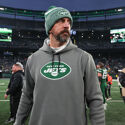

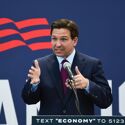
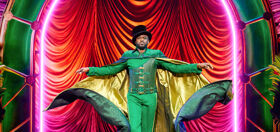


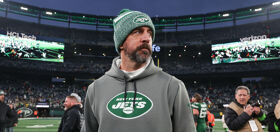





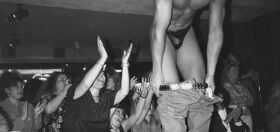

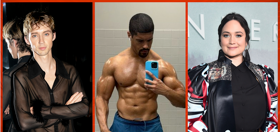
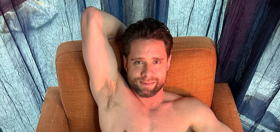
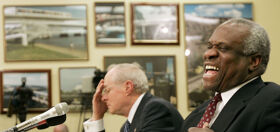
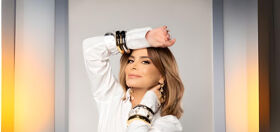
Sean S.
I’m sure a Log Cabin Republican will come on here and show how this indicates the flim flam that is the Democratic Party, and how they just use the LGBT community as a resource for money and nothing else. And then someone will ask them why they support a candidate whom opposes gay marriage, hate crime laws, and supports “don’t ask don’t tell” and they’ll claim that “He doesn’t use it as a wedge issue.” Indeed.
If there is one thing that the Democratic party machine is good at doing, it is targeting specific enclaves of voters and getting them to vote as a bloc. How it is able to do this and maintain the balancing act that is required is nothing short of sheer skill; how else can you describe a party made up of socially conservative blacks, LGBT members, Jewish voters, and even Arab Americans and Muslims. You can call it political graft, or “balkanization”, but it works nonetheless.
Chino Blanco
The Irvine PR company that runs the “Yes on 8†media campaign is holding an Open House on:
Thursday, August 14th, 2008
5:30 p.m – 8:30 p.m.
2020 Main Street
Irvine, CA 92614
All those opposed to Prop 8 are invited to attend and/or rally at 2020 Main on August 14th.
Details here:
http://www.pamshouseblend.com/showDiary.do?diaryId=6364
Or here:
http://www.calitics.com/showDiary.do?diaryId=6587
And here:
http://chinoblanco.blogspot.com/
Cheers,
Chino
ousslander
Sean S. I think you just did the work for log cabinites
seitan-on-a-stick
I want to use this forum to say how dismayed I am that the lazy-ass New York Chapter of the Stonewall Democrats endorsed 5 homophobic politicians in the New York Blade. While I (most likely) will vote for Obama for President, I am throwing my weight and Vote behind the Green Party in New York which has a better Gay Platform (so I wonder why Queerty ignores them?) than many underwhelming Big Apple Democrats like Shelly Silver. In New York, we have the wide enough margin to Vote for a third party to keep the Democrats progressive and accountable.
Ted B. (Charging Rhino)
Once again the DNC plays it’s G/L-supporters for the fool, and treats ’em like walking ATMs. “Can’t have too-many gays ‘lest we offend the Blacks and Latinos…not to mention devout Church-goers and the Blue-collar-types.”
And the draft 2008 Democratic isn’t much better. It bearly bothers to make even expend lip-service to the G/L community’s issues.
seitan-on-a-stick
What was that great lesbian hardcore band of the Gayer 90s song “By the time we get to Colorado, some heads are going to Roll…” lyrics?
Mr C
Hey Ted B…
What the fuck do you mean by this: Can’t have too-many gays ‘lest we offend the Blacks and Latinos…????????
What about Whites??????
Oh I forgor you’re protecting those homophobes….RIGHT?
Mr C
I meant forgot!